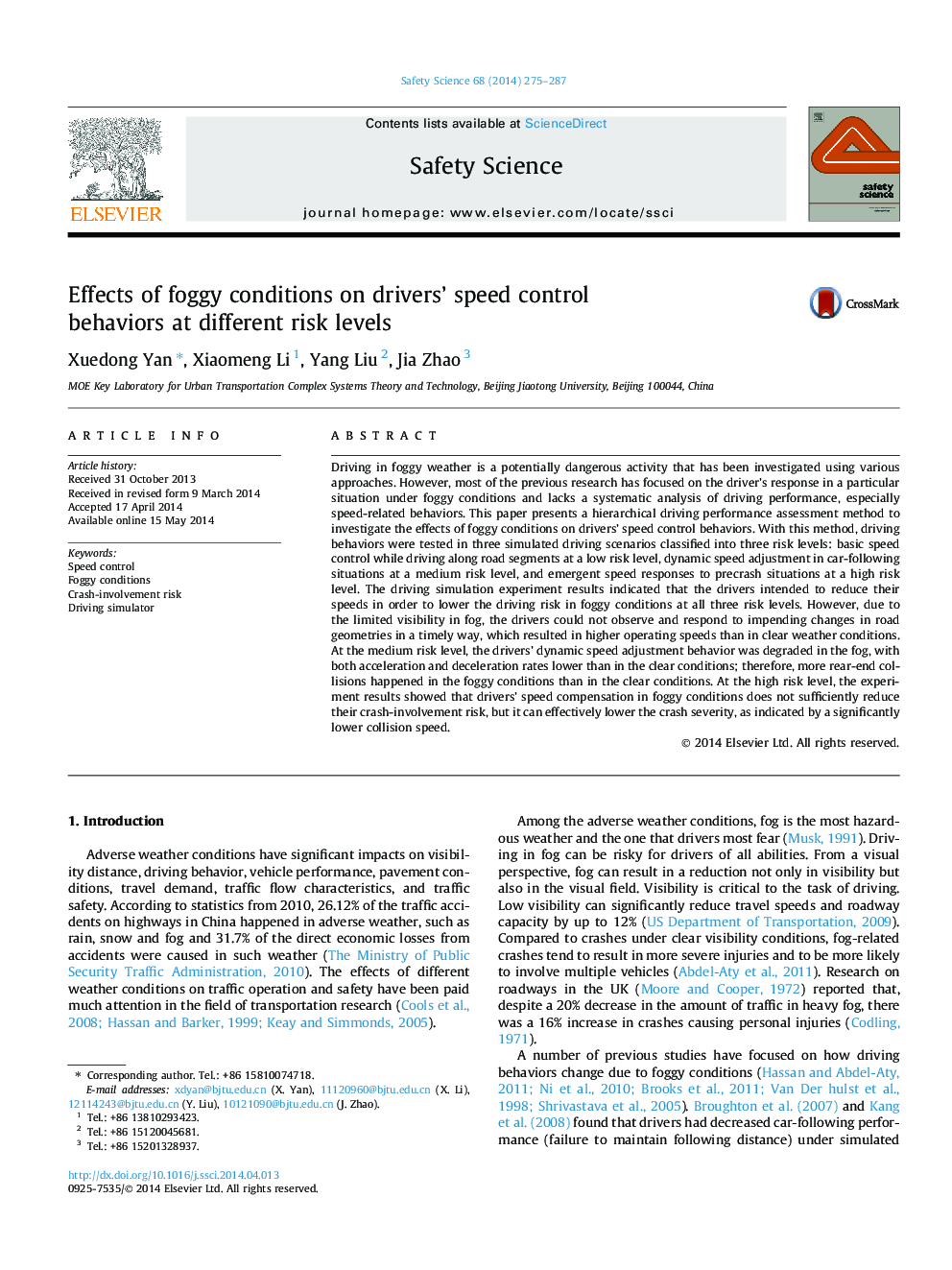| Article ID | Journal | Published Year | Pages | File Type |
|---|---|---|---|---|
| 6976285 | Safety Science | 2014 | 13 Pages |
Abstract
Driving in foggy weather is a potentially dangerous activity that has been investigated using various approaches. However, most of the previous research has focused on the driver's response in a particular situation under foggy conditions and lacks a systematic analysis of driving performance, especially speed-related behaviors. This paper presents a hierarchical driving performance assessment method to investigate the effects of foggy conditions on drivers' speed control behaviors. With this method, driving behaviors were tested in three simulated driving scenarios classified into three risk levels: basic speed control while driving along road segments at a low risk level, dynamic speed adjustment in car-following situations at a medium risk level, and emergent speed responses to precrash situations at a high risk level. The driving simulation experiment results indicated that the drivers intended to reduce their speeds in order to lower the driving risk in foggy conditions at all three risk levels. However, due to the limited visibility in fog, the drivers could not observe and respond to impending changes in road geometries in a timely way, which resulted in higher operating speeds than in clear weather conditions. At the medium risk level, the drivers' dynamic speed adjustment behavior was degraded in the fog, with both acceleration and deceleration rates lower than in the clear conditions; therefore, more rear-end collisions happened in the foggy conditions than in the clear conditions. At the high risk level, the experiment results showed that drivers' speed compensation in foggy conditions does not sufficiently reduce their crash-involvement risk, but it can effectively lower the crash severity, as indicated by a significantly lower collision speed.
Keywords
Related Topics
Physical Sciences and Engineering
Chemical Engineering
Chemical Health and Safety
Authors
Xuedong Yan, Xiaomeng Li, Yang Liu, Jia Zhao,
